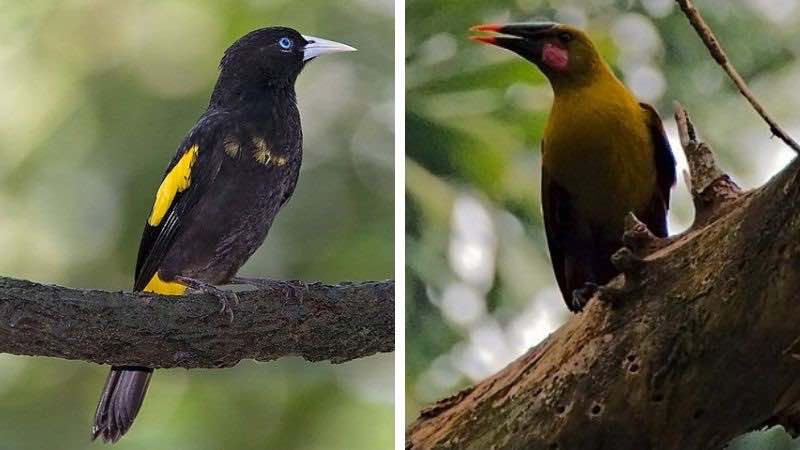
The Oropendola (Psarocolius bisfasciatus, Cacicus cela) is a very colorful bird that inhabits mainly the Amazonian regions of Brazil, Colombia, Ecuador, Peru and Venezuela.
In Brazil its common name is Cacique de Pará, Conoto del Pará or Oropéndola oliva.
Oropendola characteristics
The olive oriole or Pará cacique has green plumage on its chest and part of its back, brown wings and a yellowish tail.

Zieger M / CC BY-SA
The species Cacicus cela is called paucar, from the Quechua pawcar, or oropendola, in the Peruvian Amazon, about 28 cm long, with deep black plumage and yellow tail and part of the wings.

Doug Janson / CC BY 3.0
Feeding, behavior and reproduction
It builds its nests up to 1.8 m high, hanging from trees. Its diet is based on nectar, fruits and seeds, although it can also eat insects and small vertebrates.
It is characterized by making large nests that hang in the high branches of trees, and by imitating the cries of children and the songs of other birds.
It is said in the Peruvian Amazon that this bird was originally an Indian boy wearing black pants and a yellow shirt, who was turned into a wandering, boisterous bird by a witch to punish him.
Cacique de Pará – song

Dr. Rafael Cartay is a Venezuelan economist, historian, and writer best known for his extensive work in gastronomy, and has received the National Nutrition Award, Gourmand World Cookbook Award, Best Kitchen Dictionary, and The Great Gold Fork. He began his research on the Amazon in 2014 and lived in Iquitos during 2015, where he wrote The Peruvian Amazon Table (2016), the Dictionary of Food and Cuisine of the Amazon Basin (2020), and the online portal delAmazonas.com, of which he is co-founder and main writer. Books by Rafael Cartay can be found on Amazon.com
This post is also available in:
![]() Español (Spanish)
Español (Spanish)
